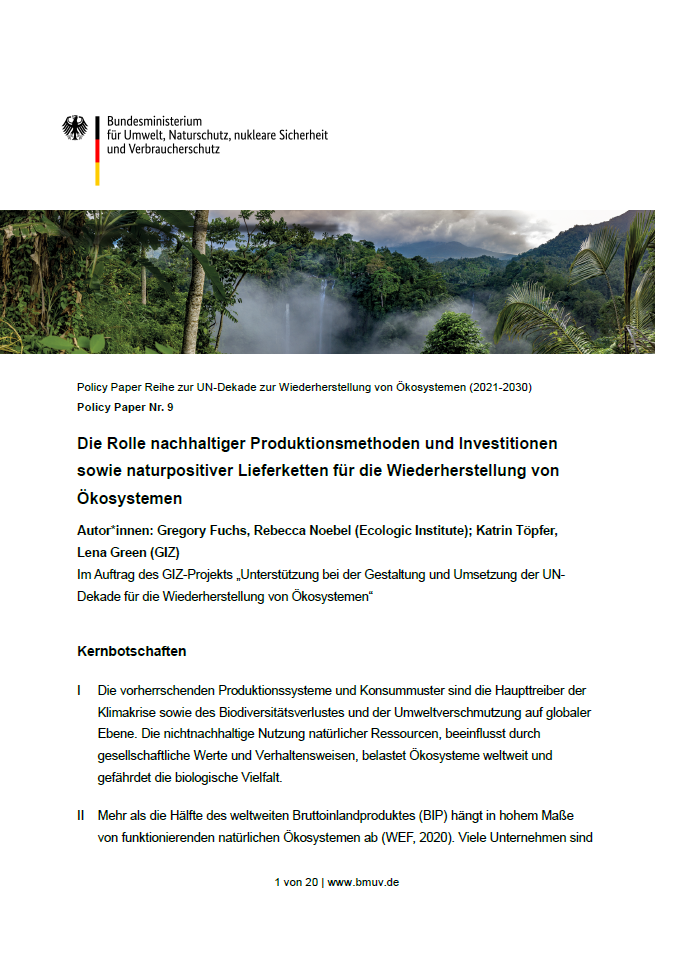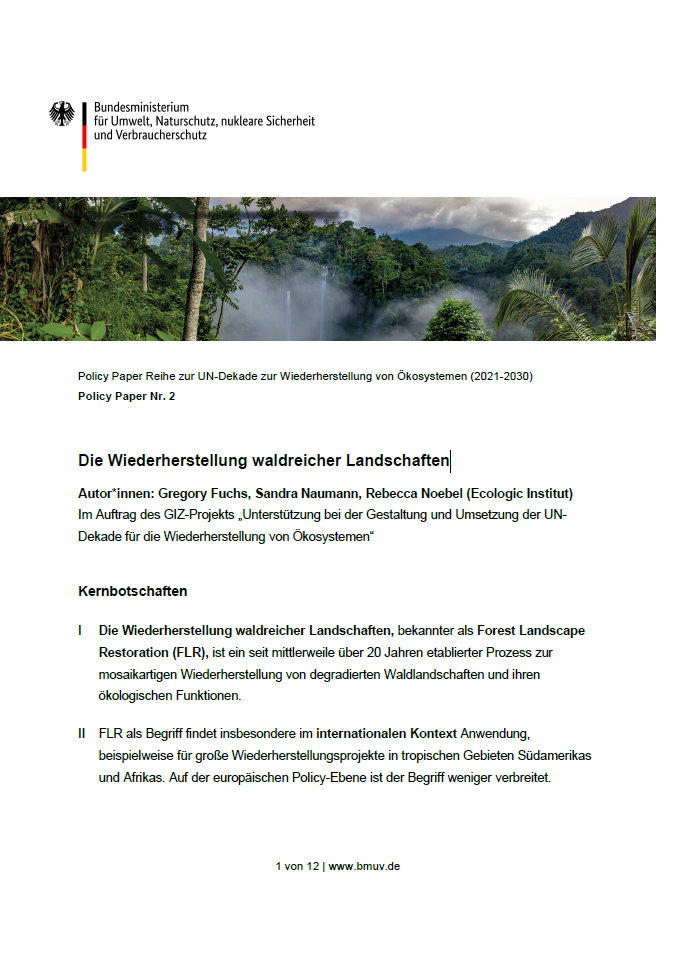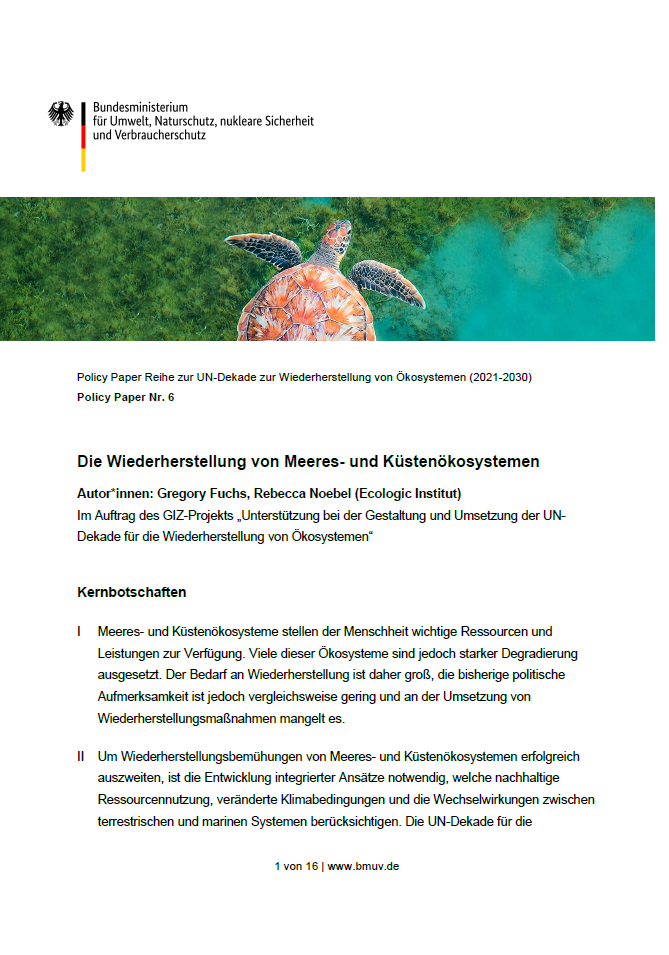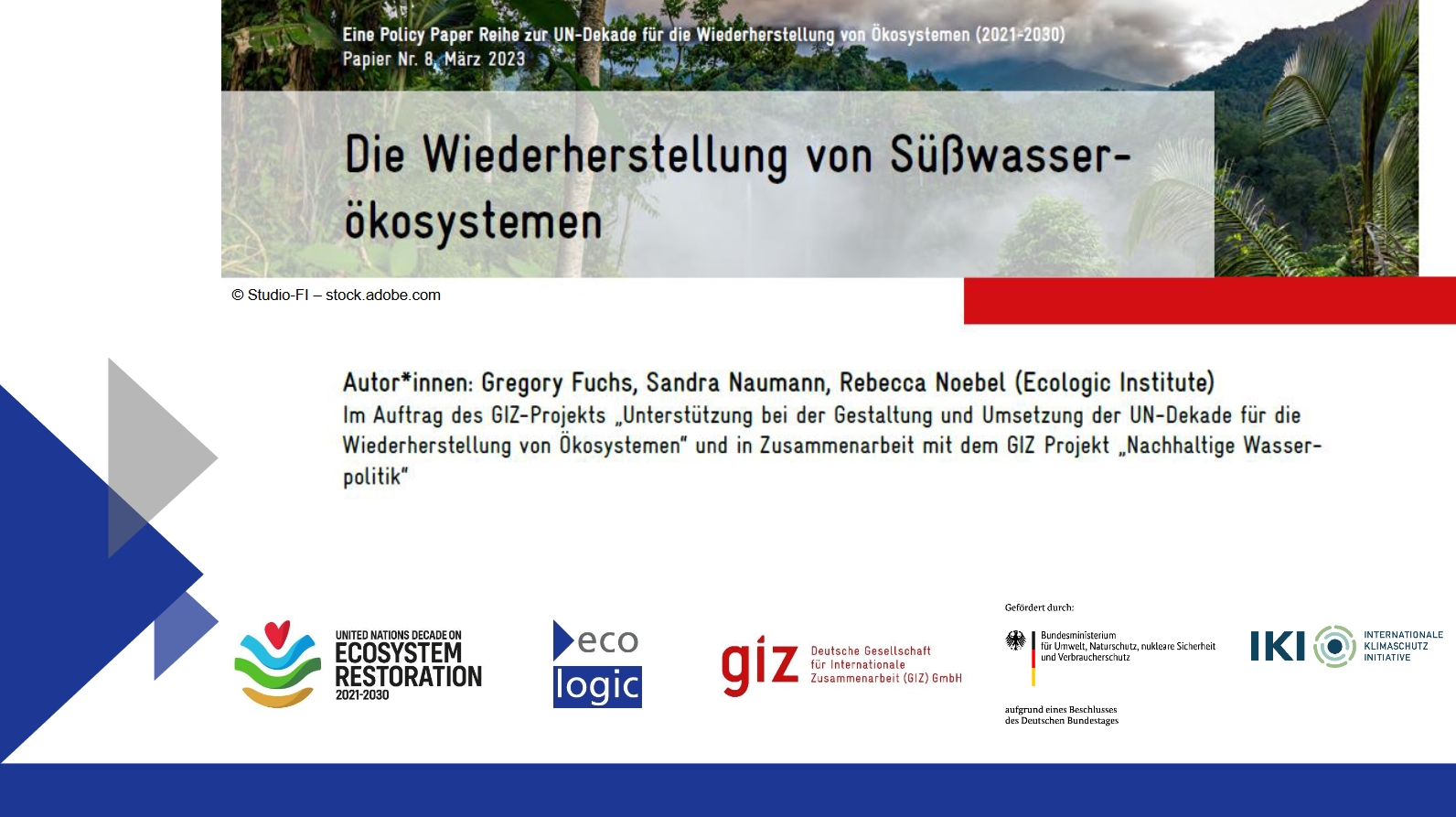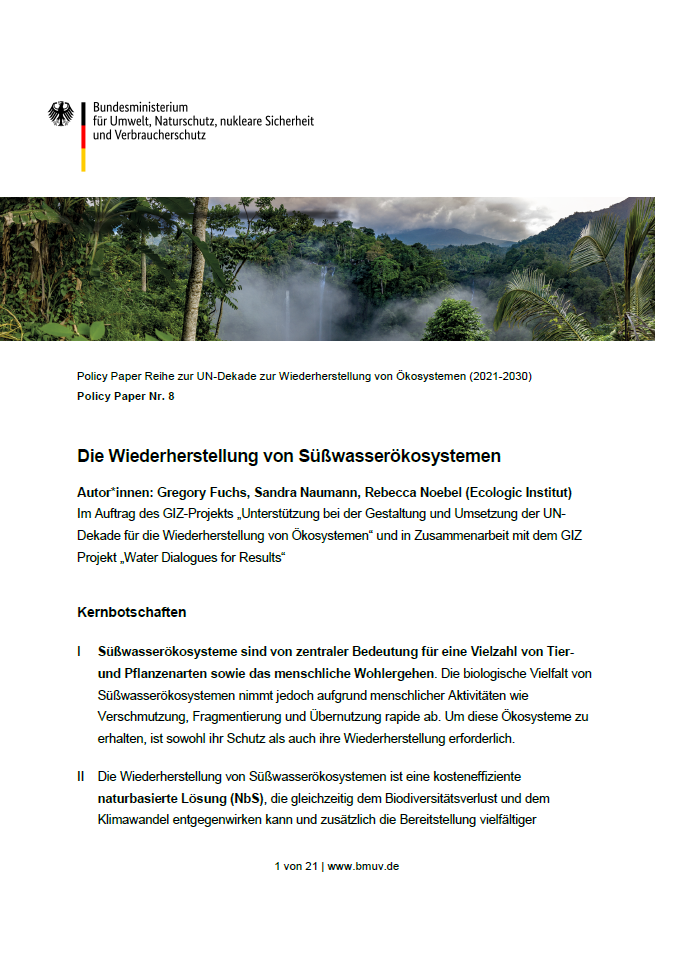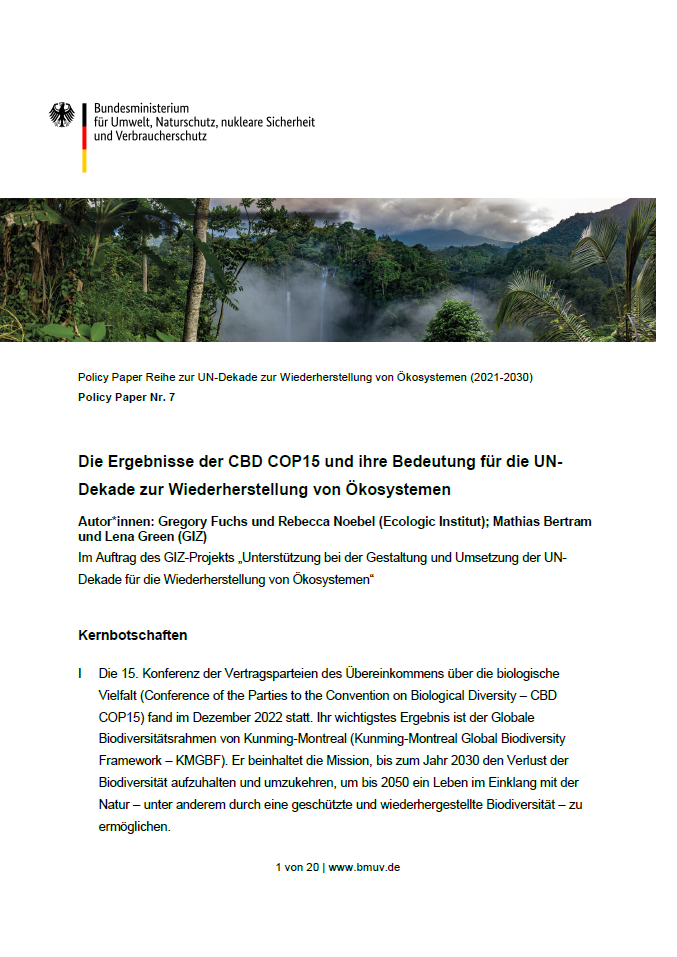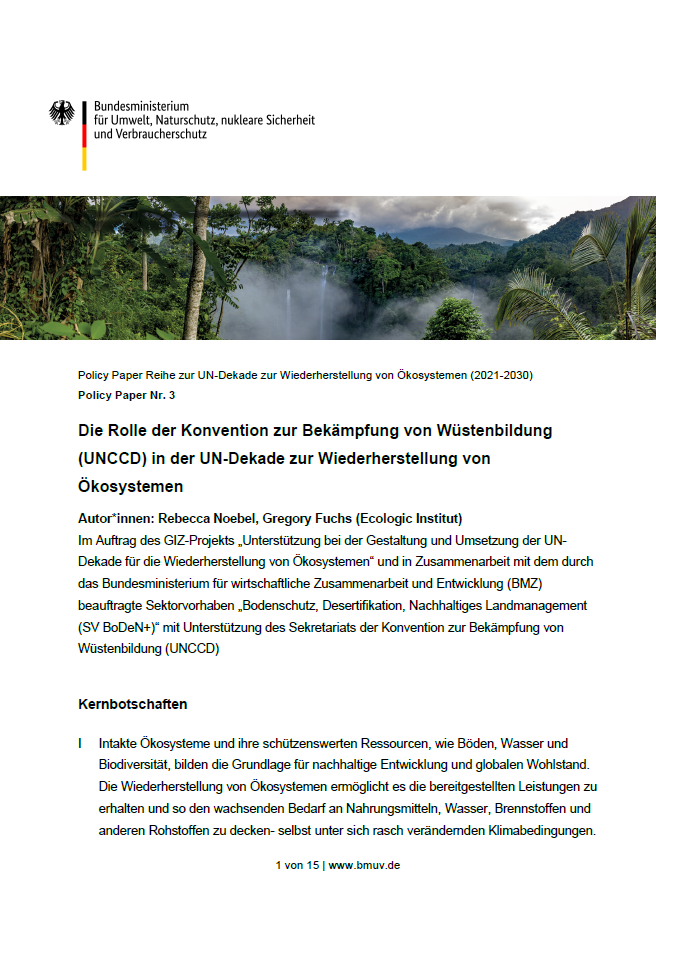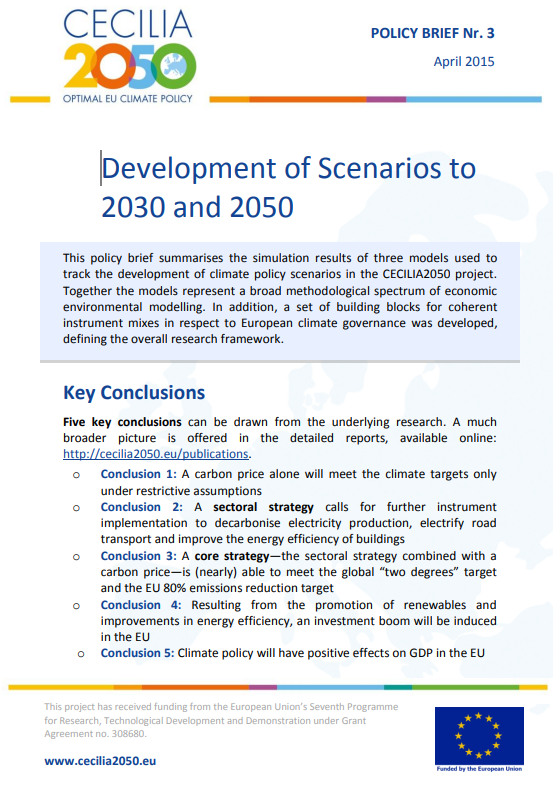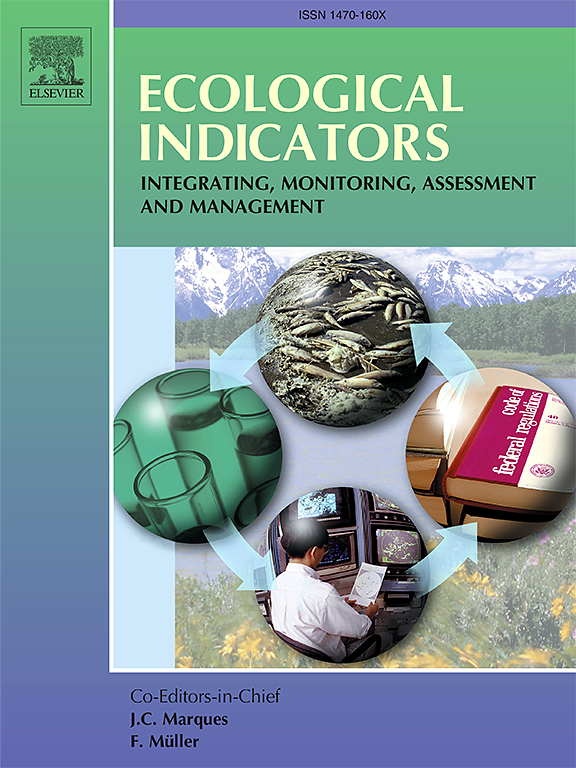© CBD
A New Global Biodiversity Framework – Assessments of COP15 outcomes
- News
- Date
-
- Location
- Berlin, Germany
- Hashtags
Following four years of development negotiations, Parties to the Convention on Biological Diversity (CBD) adopted the Kunming-Montreal Global Biodiversity Framework on 19 December 2022, replacing the CBD's Strategic Plan for Biodiversity 2011-2020 and its Aichi Targets. The agreement took place at the second part of the fifteenth Conference of Parties (COP-15) held from 7 to 19 December 2022 in Montreal, Canada under the presidency of the People's Republic of China. Ecologic Institute produced a series of policy briefs on ecosystem restoration, which is a key priority and specific target in the new global biodiversity framework. A separate publication on the outcomes of the CBD COP15 and their relevance to the UN Decade for Ecosystem Restoration is in preparation.
The framework is made up of 4 global 2050 goals and 23 global 2030 targets, which are broken up into four broad topics in alignment with the goals. This includes, biodiversity conservation and restoration, nature's contribution to people, access and benefit sharing and tools and solutions for mainstreaming and implementation.
Reactions
The agreement finally reached on the new GBF was hailed by many as a success and a bold step toward a better future for generations to come (1). However, the negotiations began with "major disagreements" among Parties, were deemed "hard-fought," and were therefore marked by "many compromises" (2-3). The meeting was met with high expectations from civil society and much media attention. In the run-up, the conference and its accompanying agreement were described as a turning point or even the "last best chance to restore our broken relationship with nature" (4). In the words of UN Secretary-General António Guterres, COP15 had the "urgent task of making peace with nature." Non-governmental organizations, including WWF and TNC, emphasized that "the future of all life on Earth is at stake" and that COP15 should become the "Paris Moment for Nature" (5) - echoing the Paris Climate Agreement under the United Nations Framework Convention on Climate Change (UNFCCC).
From goal setting to implementation
Compared to the previous Aichi Biodiversity Targets, the new GBF is more inclusive and comprehensive, but also more complex (2). One of the main reasons identified for the failure of the Aichi Targets was the vague wording of the targets. Despite many of the goals in the new GBF being SMART-that is, more specific, measurable, achievable, relevant, and time-bound (2) -many goal formulations remain relatively vague, leaving ambitious implementation up to individual states parties. Ultimately, this agreement will be judged by how well it is implemented. The agreement's goal of reversing biodiversity loss by 2030 could be undermined if it is not addressed at the national level. It is now critical that governments, businesses and society translate the agreement's goals into concrete results. This includes countries updating their national biodiversity strategies and action plans to bring them in line with global targets and scaling up their ambitions as needed to match the scale of the nature crisis. At the EU level, for example, there should be constructive exchanges on whether to align the proposed legislation's ecosystem restoration targets of currently 20% by 2030 with the GBF target of 30% by 2030.
Funding
One of the most contentious issues in the negotiations was the financial package to support global conservation efforts, particularly in developing countries. However, the GBF now includes a new financing mechanism to help developing countries achieve their goals. For the ambitious goals of the Montreal Convention to be achieved, it is critical that these financial commitments be fully met. The agreement calls for reducing nature-damaging subsidies, by at least $500 billion, and also committing to increase financial resources from all sources by 2030, mobilizing at least $200 billion per year. This is roughly double the 2020 baseline, but is still likely to be insufficient compared to what would actually be needed. For example, a recent UN report shows that current financial flows for NBS are $154 billion per year, which is less than half of the $384 billion per year needed by 2025 and one-third of the $484 billion per year needed by 2030. In particular, private sector investment in NBS needs to increase "by several orders of magnitude" in the coming years.
The importance of threatened biodiversity
We depend on biodiversity for what are known as "ecosystem services," the direct and indirect benefits that people derive from ecosystems, such as food, wood, air quality, and water purification. The latest update of the IUCN Red List of Threatened Species, published at the start of COP15, highlights the scale and urgency of the biodiversity crisis: 28% of animal and plant species are currently at acute risk of extinction (6); within the next few decades, as many as one million could face extinction (7). Given the many services that nature provides for us, we should use all our efforts and resources to combat this major crisis. COP15 provided a critical opportunity for governments around the world to agree on important actions to halt biodiversity loss and preserve the world's remaining biodiverse ecosystems. The five main pressures on biodiversity are land and sea use change, direct exploitation, climate change, pollution, and invasive species. They are all directly linked to human activities.
References
1. UN / United Nations (2022a). UN News. UN conference concludes with ‘historic’ deal to protect a third of the world’s biodiversity. Online verfügbar: https://news.un.org/en/story/2022/12/1131837
2. IISD / International Institute for Sustainable Development (2022). Summary of the UN Biodiversity Conference: 7-19 December 2022 Online verfügbar: https://enb.iisd.org/un-biodiversity-conference-oewg5-cbd-cop15
3. ClientEarth (2022). COP15 halftime report: Lawyers concerned as wordsmithing stalls progress. Online verfügbar: https://www.clientearth.org/latest/press-office/press/cop15-halftime-re…
4. UK-Government (2022). Press release. COP15 - UK nature agencies set out vision to restore nature to avoid ‘profound threat to humanity’s future’. Online verfügbar: https://www.gov.uk/government/news/cop15-uk-nature-agencies-set-out-vis…
5. TNC / The Nature Conservancy (2022). CEO Statement: ‘At CBD-COP15, the future of all life on Earth is at stake’. Online verfügbar: https://www.nature.org/en-us/newsroom/the-nature-conservancy-statement-…
6. IUCN / International Union for Conservation of Nature (2022). Press Release. Human activity devastating marine species from mammals to corals - IUCN Red List. https://www.iucn.org/press-release/202212/human-activity-devastating-ma…
7. IPBES / Intergovernmental Science-Policy Platform on Biodiversity and Ecosystem Services (2019). Global assessment report on biodiversity and ecosystem services of the Intergovernmental Science-Policy Platform on Biodiversity and Ecosystem Services. E. S. Brondizio, J. Settele, S. Díaz, and H. T. Ngo (editors). IPBES secretariat, Bonn, Germany. Online verfügbar: https://zenodo.org/record/6417333#.Y7fcxNWZM2w.
8. UN / United Nations (2022). State of Finance for Nature 2022. Online verfügbar: https://www.unep.org/resources/report/state-finance-nature-2022




